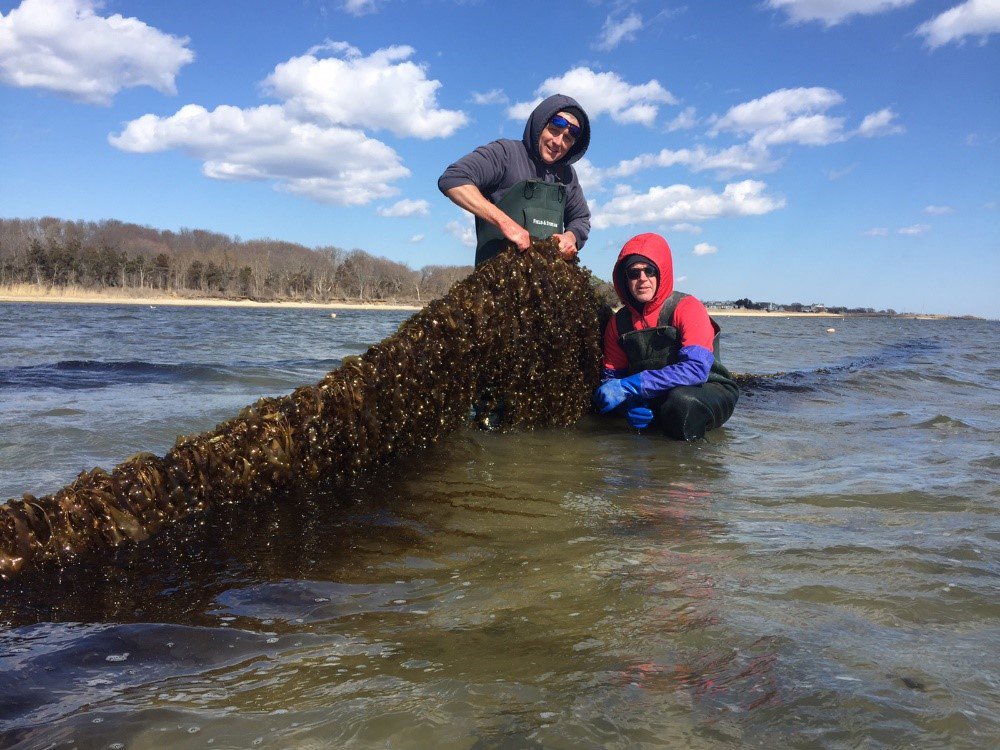
Scientists from Stony Brook University, led by Dr. Christopher Gobler, have discovered that the growth of kelp reduces ocean acidification, an effect of climate change.
“Kelp can raise the pH of seawater from acidification conditions to actually what we call baseification,” said Gobler. “The conditions that the shellfish need to have maximum growth.”
Ocean acidification is a decrease in the pH of ocean waters and has the greatest effect on shellfish, causing slower shell growths for bivalves, like clams and oysters. In addition, ocean acidification causes the death of fish larvae, slows molting of lobsters and crabs, and kills plankton.
“Ocean acidification is often referred to as the evil twin of climate change,” said Adrienne Esposito, executive director of Citizens Campaign for the Environment. “According to the National Oceanic and Atmospheric Administration, 30 percent of all carbon dioxide released into the atmosphere from burning fossil fuels gets deposited into our ocean and marine environment, causing ocean acidification.”
The results of the four-year-long study have been published in Frontiers of Marine Science to show the positive effects of growing kelp alongside Eastern oysters, blue mussels and hard clams.
“The results were crystal clear,” said Gobler. “If we grew the oysters exposed to ocean acidification, their growth rates slowed to almost nothing. But by simply co-growing the oysters with the kelp in the lab, we could rescue that growth rate and bring it up to the same exact conditions as the same oysters that were exposed to normal pH conditions.”
The kelp is line grown: Spooling line is pollinated with kelp spores, then planted in the water in the fall, and the kelp grows over the winter.
Gobler and his team are hopeful that they can spread the conjoined growth of oysters and kelp to more oyster farms but recognize that the current system in New York makes it difficult.
Their team faced these problems in their research since New York lacked a hatchery for kelp spores, leading the team to create one.
Gobler and his team were the first group to grow kelp in shallow local waters when the experiment began in 2018. Over the past four years, they were able to conduct six experiments in Gobler’s lab, in addition to a field experiment at Great Gun Oyster Farm in Moriches Bay.
The study showed that in areas with kelp, there was a reduction of ocean acidification. The study also shows a halo effect for bivalves — those grown closer to the kelp have the biggest effects, as oysters grew faster in water with a higher pH.
“The results were actually dramatic,” said Gobler. “The growth rates of the oysters that were grown with the kelp were five times higher than the oysters that were farther away from the kelp.”
Gobler’s team included Mike Doall, associate director of shellfish restoration and aquaculture at Stony Brook University, and a former oyster farmer.
“It’s a localized impact around oyster farms,” said Doall. “We are not trying to solve the global ocean acidification crisis with growing kelp — that’s the furthest thing. But within an oyster farm, more specifically within the halo around the kelp, it could provide a benefit to the shellfish to protect against ocean acidification.
“This is a part of a solution to a very big problem,” he added.
For the future of the experiments to reduce ocean acidification and nitrogen content in local waters, Gobler is planning to begin a study focused on the benefits of Gracilaria, a red algae, with an opposite growing season to kelp.
Additionally, Gobler will begin experimenting with putting the kelp in earlier in the growing season.